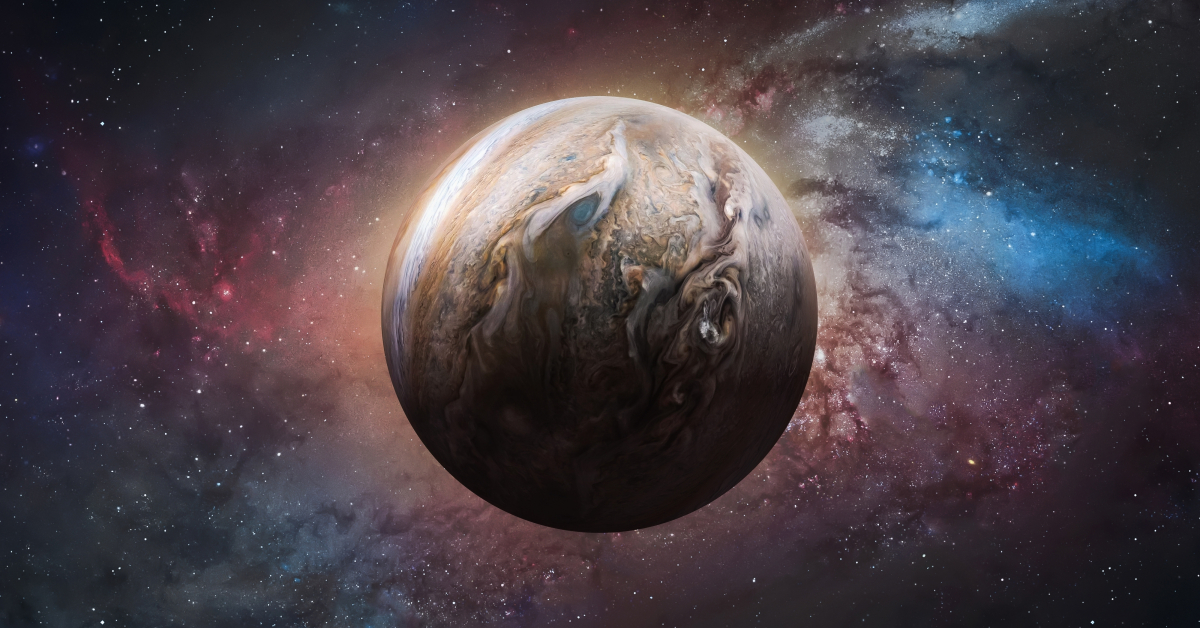They send it out shortly before Halloween NASA Strange image from Jupiter to Earth. On the surface of the largest planet in our solar system, you can see a frightening face: strangely oozing black eyes, with some kind of tumor between them. A crooked nose and beneath it a crooked, sullen mouth. The chin shows the clearest resemblance to a human.
Overall, the shape is somewhat reminiscent of the paintings of the Italian painter Giuseppe Arcimboldo, who painted faces composed of vegetables or fruits.
With a little imagination you can recognize the face here. (Image: NASA/JPL-Caltech/SwRI/MSSS)
According to NASA, the strange photo was taken on September 7, 2023, during the 54th flight of the Juno space probe around Jupiter. Citizen scientist Vladimir Tarasov extracted it from RAW data from Juno’s camera and made it available to the public. At the moment the photo was taken, the probe was flying around the gas giant at an altitude of 7,700 kilometers.
Editorial recommendations
The white material that appears to form a monstrous face is actually clouds and storms blowing across Jupiter’s surface. According to NASA, the low angle of incidence of sunlight in the image highlights the lines clearly.
The storms roll along Jupiter’s dividing line, the line dividing the day and night sides of the planet. The contrast between light and dark makes the face more terrifying.
Storms on Jupiter often create configurations reminiscent of human physiognomy. In 2017, NASA presented a less terrifying face of Jupiter, which… Goofy called McJupiterface.
The phenomenon of recognizing faces or human or animal shapes in structures is called pareidolia in cognitive psychology. Human consciousness is calibrated to perceive familiar shapes in chaotic patterns. There is nothing more familiar than a face. Everyone must be familiar with this phenomenon with clouds or wood wallpaper.
Pareidolia allows us to see faces not only on Jupiter, but also on other celestial bodies. Of particular fame is the Face on Mars, a rock formation that looks eerily similar to a human head.
A rabbit and a human face have already been discovered on Earth’s moon, although it looks more abstract than its surprisingly realistic counterpart on Mars.
NASA’s Juno spacecraft lifted off from Earth in 2011 and entered Jupiter’s orbit in the summer of 2016. As the first probe to orbit the gas giant planet, it derives its power from solar cells. During its polar orbit it is always in contact with the Sun.
Juno will investigate the composition of Jupiter’s atmosphere and study its polar magnetosphere. It also provided amazing insights into the essence of the planet. Scientists had assumed a core the size of the Earth, but Juno has not yet provided any evidence of this.

“Total coffee aficionado. Travel buff. Music ninja. Bacon nerd. Beeraholic.”







More Stories
Exploding Fireball: Find the meteorite fragments
Neuralink's competitor lets blind people see again with an implant
A huge meteorite has hit Earth – four times the size of Mount Everest